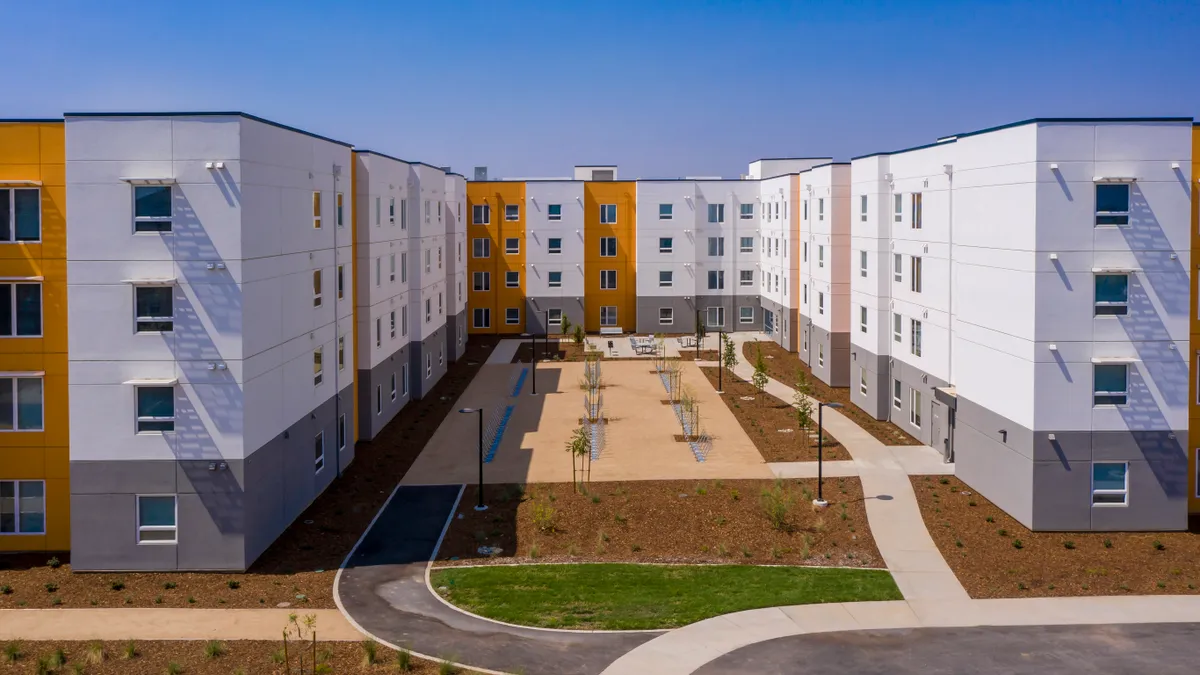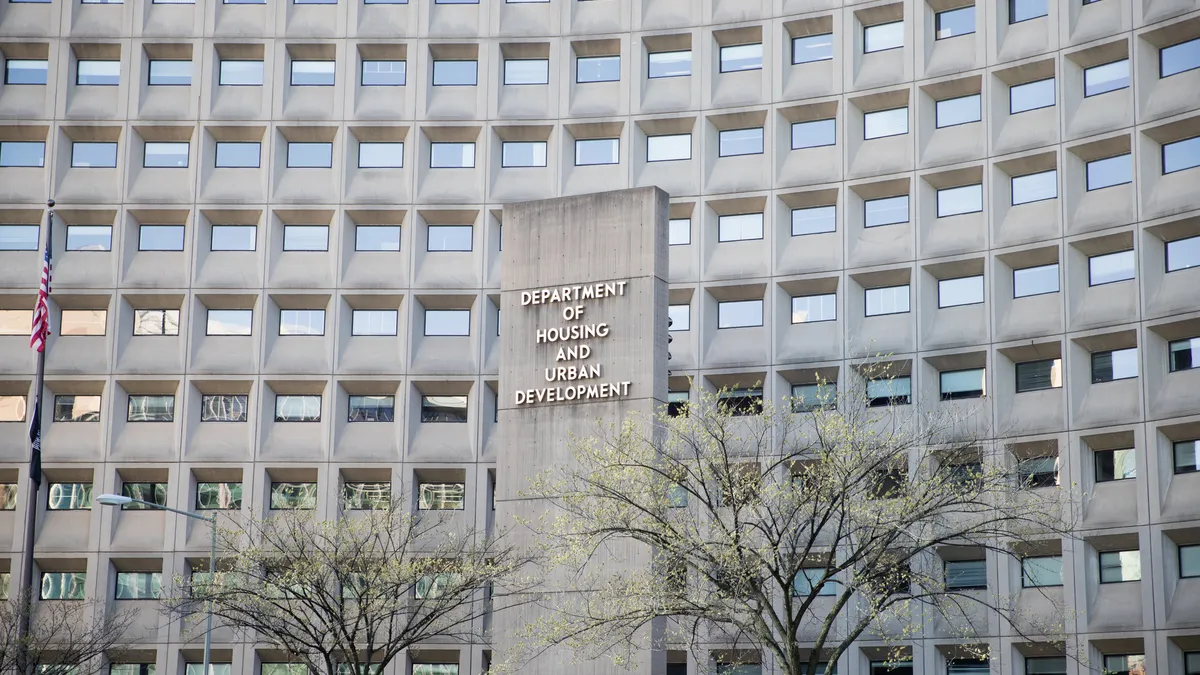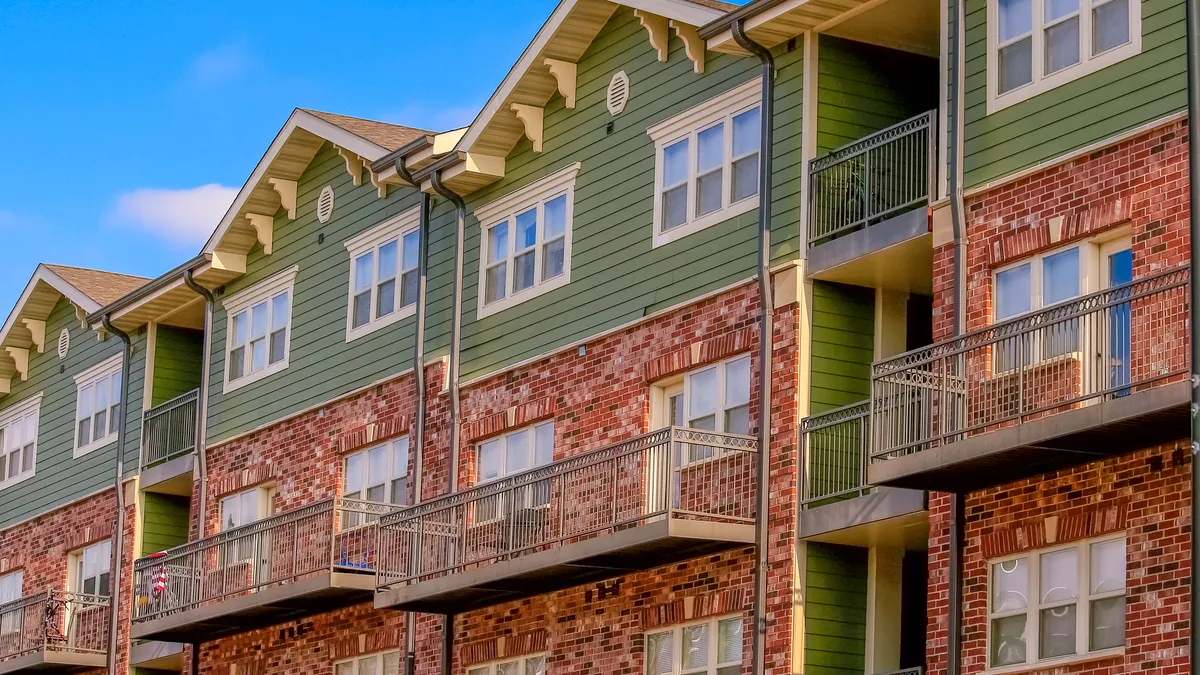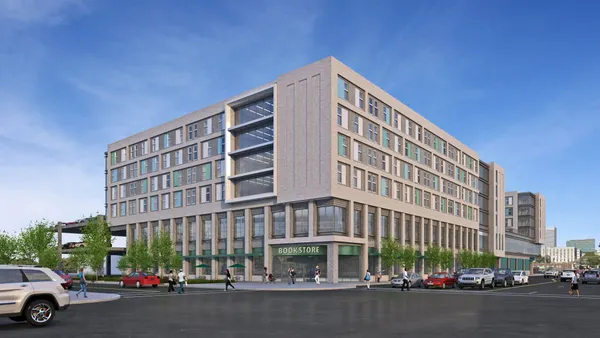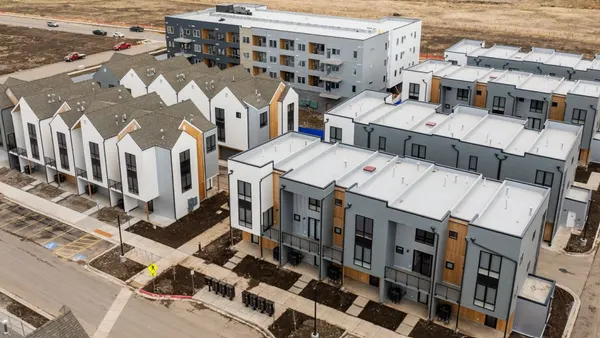The last thing a developer wants is hundreds of angry parents yelling at them. But when new student housing construction is delayed because materials are delivered months late, developers get an earful, plus they have to pay thousands, or even millions, in penalties and interest.
For student housing developers the extra costs and reputational damage of opening late have forced them to look at new ways to ensure jobs are completed on time. Some are managing the problem by working with suppliers and contractors to make sure that products arrive on time.
Worst case: they postpone opening dates.
"If we're delayed and we can't get the project open, then we've got to find a place to put all those students until the building is finished," said Joe Shivell, vice president of architecture and engineering at The Michael Organization, a Camden, New Jersey-based builder of multiple types of housing, including student housing.
A lingering problem
In the fall of 2020, Dallas-based student housing developer Fountain Residential Partners was almost done on its first housing community in Massachusetts – North 116 Flats, a 150-unit student housing property for the University of Massachusetts Amherst in Sunderland – as supply chain backups were starting to hamper construction projects nationwide.
"I remember our cabinets were out somewhere in the middle of the ocean," said Brent Little, president and CEO of Fountain. "We were just holding our breath until we saw the containers unload with our cabinets in them."
The North 116 Flats opened on time, and Little thought his projects would be in the clear from supply chain backups after vaccines rolled out. Wrong.
"What we didn't realize was the lag effect of COVID-19," he said.
This lag effect is still hampering Fountain's East Village project in Charlotte, North Carolina, under construction since 2019. The three-phase project includes 1,426 beds, with 727 beds in the first portion. Only 90% of the beds in the first phase have been delivered.
"It was almost something every week," Little said. "We finally get the studs, and then we can't get the plywood. Then you can get the plywood, [but] now the plywood is four times what it costs before. We finally get the plywood, but then you can't get the siding. Then once you get the siding, you can't get the drywall. Then you can get the drywall, but then there's no drywall mud. Then you get the mud, but we're still out there struggling to get paint."
Little says the company took an "all hands on deck" approach to solving these problems with "everyone involved in the project reaching out to their sources across the country to find the necessary materials to make progress on the critical path."
But the problems don't just end with building materials. Student housing developers and contractors have had difficulty procuring the furnishings and appliances necessary to finish projects. The Michael Organization had problems finding furniture for the common areas at its 3,300-bed student living community, The Green at West Village at The University of California, Davis (pictured above), which was stuck in Asia.
Fortunately, for Michaels, the headaches with the late-arriving furnishings were limited. "You can't occupy an apartment unless you have furniture," Shivell said, "but if you miss a couple of pieces here and there of common area furniture, nobody is going to really notice it."
Procuring materials
For some, tackling supply chain issues starts with more advance planning and picking the right partners. Texas-based REIT American Campus Communities (ACC), one of the largest players in the student housing universe, delivered several developments on time and within budget during the pandemic, including one at the University of Southern California Health Sciences Campus and five of 10 phases of Flamingo Crossings Village near Disneyland.
ACC relies on its general contracting partners to purchase materials earlier in the procurement process to reduce potential supply chain impacts, according to Jake Newman, senior vice president of development for ACC. The company sources furniture, fixtures and equipment that is manufactured in different parts of the world to limit its dependency on one region or country.
"It is critically important to partner with vendors who are well established and have access to a wide variety of subcontractors and suppliers to mitigate the supply chain and labor issues we face today," Newman said.
When Michaels' furnishings for its apartments at The Green at West Village were sitting in containers on ships off the West Coast, the company relied on a different supplier to store them in private containers until they were needed. "We were able to get ahead of some of that," Shivell said. "We had a vendor who saw it coming, pre-ordered it and shipped a lot of furniture months ahead of schedule."
Contractors and developers are also protecting themselves by specifying multiple types of the same product, gaining flexibility if there are shortages at one window manufacturing plant, for instance.
"They might commit to two [products] so if one of them is going to be really delayed, they can go the other one and it's already pre-approved," said Lisa Majchrzak, an associate principal in the Oakland, California office of TCA Architects. "That's one of the strategies to help stay on schedule."
Building in more time
While some developers are purchasing materials ahead, that may not be enough.
Fountain has built "an abundance of time" in project schedules since the pandemic began, according to Little.
At its 132-unit Flatiron project at Louisiana State University in Baton Rouge, Fountain delayed the start and pushed back the opening by a year after encountering delays with entitlement, financing and design. It is expected to open next year. "We would rather push a deal back a year, than not have enough time," Little said.
At Kennesaw State University in Atlanta, Fountain started work early on the 14 SixtyFive, a 241-bed project that should open in May. The extra time gave the developer the option of moving students in early and hosting events, like pool parties, that create a community atmosphere at the new property.
"The last two years have been an abundance of unforeseen circumstances," Little said. "So we'd rather turn it over early. What's the worst thing that happens? We have a couple of extra months of interest expenses?"
That certainly beats the alternative, Little said, "There is no downside to turning over early as compared with turning over late and spending six or seven figures on hotels."
Click here to sign up to receive multifamily and apartment news like this article in your inbox every weekday.



